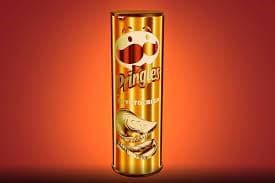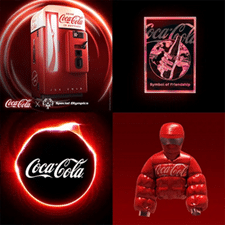Louis Vuitton, Adidas, Samsung, Coca-Cola, and many others… Many brands have already shown interest in non-fungible tokens (NFTs). What’s the point of deploying NFTs and joining the metaverse movement? Here we give you 9 good reasons why brands can benefit from NFTs
NFTs are on the rise since 2021
Non-fungible tokens (NFTs) are becoming more and more attractive to brands. They are more than ever on the radar of many marketing professionals.
The spectacular sales of NFTs in 2021 have caught the attention of many brands. Indeed, there is talk of $41 billion in total sales of NFTs in 2021 on the Ethereum blockchain, according to consultancy Chainalysis, representing a growth of almost 43,000% between 2020 and 2021.
It is also the rise of metaverses among the general public, marked by the announcement of the launch of Meta’s – formerly Facebook’s – new metaverse in October 2021, that has propelled NFTs into the spotlight.
What exactly is an NFT?
A non-fungible token is a certificate of ownership of an asset, registered on the blockchain. An NFT can take many forms.
It can be a piece of art, which can be displayed on a connected watch or a wall screen. An NFT can also represent a real object, like a certificate of authenticity.
And of course, an NFT can be an asset on a metaverse. In fact, all the goods that are bought and traded on metaverses such as Decentraland and The Sandbox are NFTs: a cap, a piece of land, a concert ticket, a house, etc.
NFTs are brand friendly
NFTs combine many attributes that offer immense possibilities: certificates of authenticity for a work, visual content, utility, interoperability, programmability, transparency, rarity, title to the metaverse and secondary royalties.
These features can translate into nine major benefits for brands, which we will present to you.
Digital certificates
NFTs can attest to the authenticity of an object, whether virtual or real, thanks to the transparency offered by the blockchain.
This is why many luxury brands, such as luxury watch manufacturer Breitling, now offer certificates of authenticity in the form of NFTs when selling their products.
NFTs for a brighter future
NFTs are titles of ownership of content, usually a 2D or 3D digital image, that has the potential to add aesthetics and light to a brand.
An NFT can be creative, original and even artistic. NFTs are visually pleasing and impactful. They can involve artists and associations. They are therefore real communication tools.
Any consumer brand can use an NFT to create a “wow” effect and provide a visual experience for its customers.
For example, Taco Bell restaurants and Pringles crisps were among the first to create artistic NFTs, with “transformative tacos” and glittering chip packets. These NFTs can be displayed by their owners on a real screen or within a metaverse, and help promote the brand.

One of the Pringles brand NFTs

The Transformative Tacos NFT from Taco Bell
NFTs have a purpose
An NFT can not only represent something, but also serve as a ticket to an event or a discount voucher in a shop, as with the NFTs of cosmetics brand Clarins, which launched a loyalty programme in the form of NFTs in October 2021.
An NFT can also be “usable” as an accessory.
Thus, a pair of shoes in the form of NFTs can be worn on the foot of one’s avatar in a metaverse, but also in real life, thanks to augmented reality (AR) technologies.
The NFT can thus become a must-have fashion accessory, which is visible to its peers through augmented reality glasses or a mobile phone. Successful examples include Nike’s “CryptoKicks Shoes” and Dolce & Gabbana’s “Metajacket” jacket.
These wearable NFTs, also known as “wearables” in the metaverse, have become real product lines for some brands, such as Nike, which recently bought RTFKT (pronounced “Artefact”), a start-up specialising in the creation of virtual trainers in the form of NFTs.
NFTs are interoperable
NFTs are developed according to standards (ERC-721 and ERC-1155 on the Ethereum blockchain). The idea is that they are transferable from one wallet to another and interoperable from one platform to another, from one metaverse to another. Although this is not yet effective, the principle is that NFTs have no borders.
NFTs are programmable
So their visual content can change over time and according to an event.
For example, an NFT can change its appearance according to the seasons, or give birth to another NFT under certain conditions.
This makes it possible to imagine interactive, playful and storytelling NFTs.
An inspiring example is the “Project Ark” initiative of the World Wildlife Fund (WWF). One of the projects aimed to reintroduce bison in Romania. If the fundraising target was reached, the eggs hatched, releasing another NFT, representing a 3D sculpture of a bison.
Another case in point is the Coca-Cola brand. The Coca-Cola brand launched a project to auction off 4 NFTs to celebrate Friendship Day.
This NFT project perfectly combined the modern potential of NFTs with the historical richness of the brand, with NFTs representing a retro Coca-Cola fridge. The fridge was a loot box, which contained four other NFTs representing iconic elements of the brand, including a down jacket worn on Decentraland.

Coca-Cola NFTs to celebrate Friendship Day
NFTs are transparent and historic
NFTs keep a complete history of their transactions. This is freely searchable on the blockchain. They can in fact be compared to old library cards.
This historicity can increase the value of an NFT. Its age, or the fact that it belonged to someone famous, can give an NFT extra appeal.
Similarly, NFTs can capture historical moments of a brand. This is called “memorabilia”. This allows fans to own episodes of the brand’s history, creating an emotional connection with the brand.
Among the most popular and lucrative NFTs in recent months have been the NFTs for Dappers Labs’ NBA Top Shot app, which feature clips of memorable moments from a sporting event. Total sales of NBA Top Shot NFTs exceeded $700 million in 2021.
NFTs can be integrated into metaverses
It is thus possible to develop a game or an attraction around NFTs. It is therefore possible to imagine truly engaging and gamified experiences. The creative possibilities are endless.
For example, a brand can tell its story, express its values, and present its products in an original and impactful way.
For example, electronics manufacturer Samsung recently opened a shop in the Decentraland metaverse with NFTs to be won, highlighting its sustainability values.
In combination with the metaverse, NFTs are modern, cutting-edge products that can help refresh a brand image.
They are aimed at younger generations and respond to their consumption patterns.
Notable examples include the Burberry avatar, developed in 2021 for the metaverse game Blankos Block Party. Similarly, the luxury brand Louis Vuitton celebrated its 200th anniversary with a game and NFT hunt “Louis the Game”.

An NFT from Louis Vuitton

A Burberry NFT on the Blankos game
NFTs are at the heart of metaverses, which are becoming the new place for marketing.
Indeed, experts (including Mark Zuckerberg) agree that metaverses will eventually replace social networks.
The number of users and interactions on metaverses is growing. For example, there are now nearly 60 million messages a day exchanged on the Roblox metaverse, according to Bloomberg Intelligence, compared to about 100,000 million on WhatsApp.
NFTs can be rare
NFTs are very often minted in limited editions. Rarity is a key attribute of NFTs. With each new edition, there is not enough for everyone…
Thus, the acquisition of an NFT is exhilarating and makes customers want to share it with their friends on social networks.
A rare NFT is therefore collectible. A whole social community can develop around the activity of buying, selling and collecting an NFT project.
NFTs are therefore superb tools for creating, developing and animating a community, with regular drops. Each drop is an opportunity to communicate with the community, and to animate attractions or events on the metaverse.
Drops can be broadcast on social networks, but also on the metaverse, one feeding the other. Indeed, you can set up panels with links to Twitter, Discord or other social networks on the metaverse, and thus invite more followers.
NFTs pay lifetime royalties to brands
Last but not least, NFTs can generate revenue for brands, either directly or through licensing partnerships.
Whether they are accessories (“wearables”) to be purchased in a metaverse shop or a simple collection of images, sales of NFTs can generate significant revenues with relatively limited production costs.
An example of successful NFTs with a trademark license is the F1 Delta Time project. These NFTs using the Formula 1 license have generated nearly $12 million since their launch, according to the NFTs statistics site Nonfungible.
Even better, royalties can be programmed into the NFTs’ smart contracts. So not only can brands receive royalties on NFTs at issuance, but also – and this is the big news with NFTs – on every secondary sale in the market.
Conclusion
NFTs are attractive and dynamic products. They can be bought, displayed, resold, collected, experimented with… Coupled with an attraction on metaverses, they can bring a fun and emotional experience to a brand’s audience, animate a community, and generate lifetime royalties for brands.
After revolutionising the digital art market in 2021, NFTs could well become a new Eldorado for brands and disrupt the marketing landscape as a whole.
